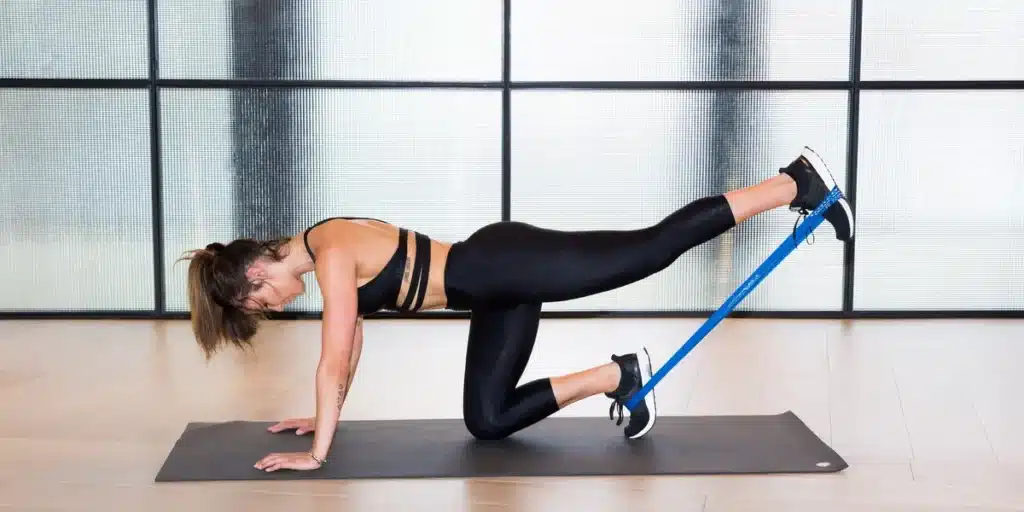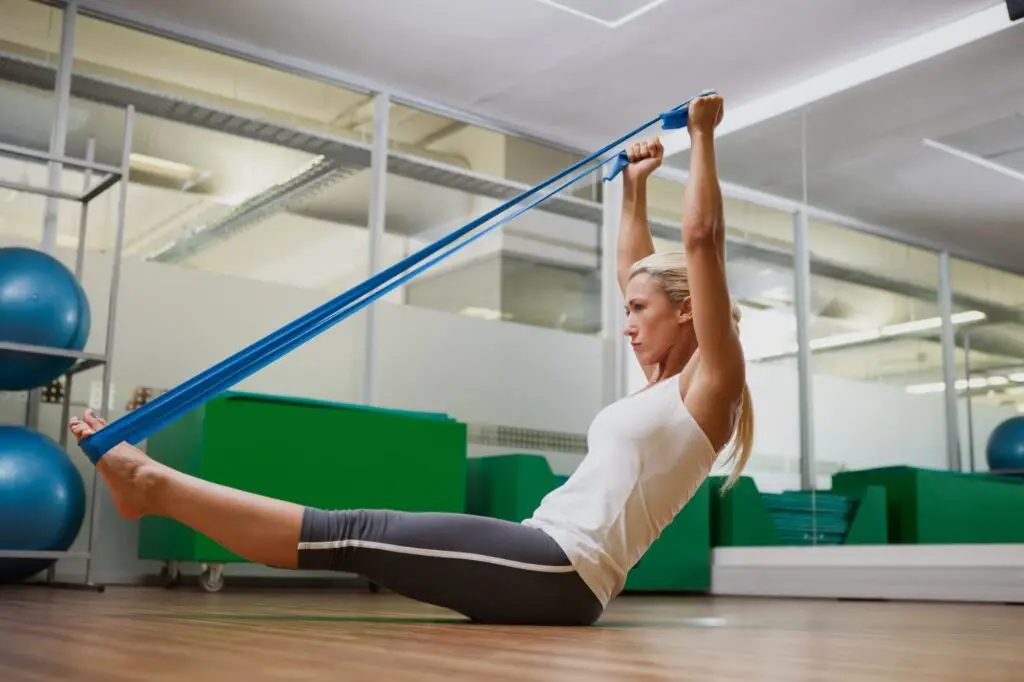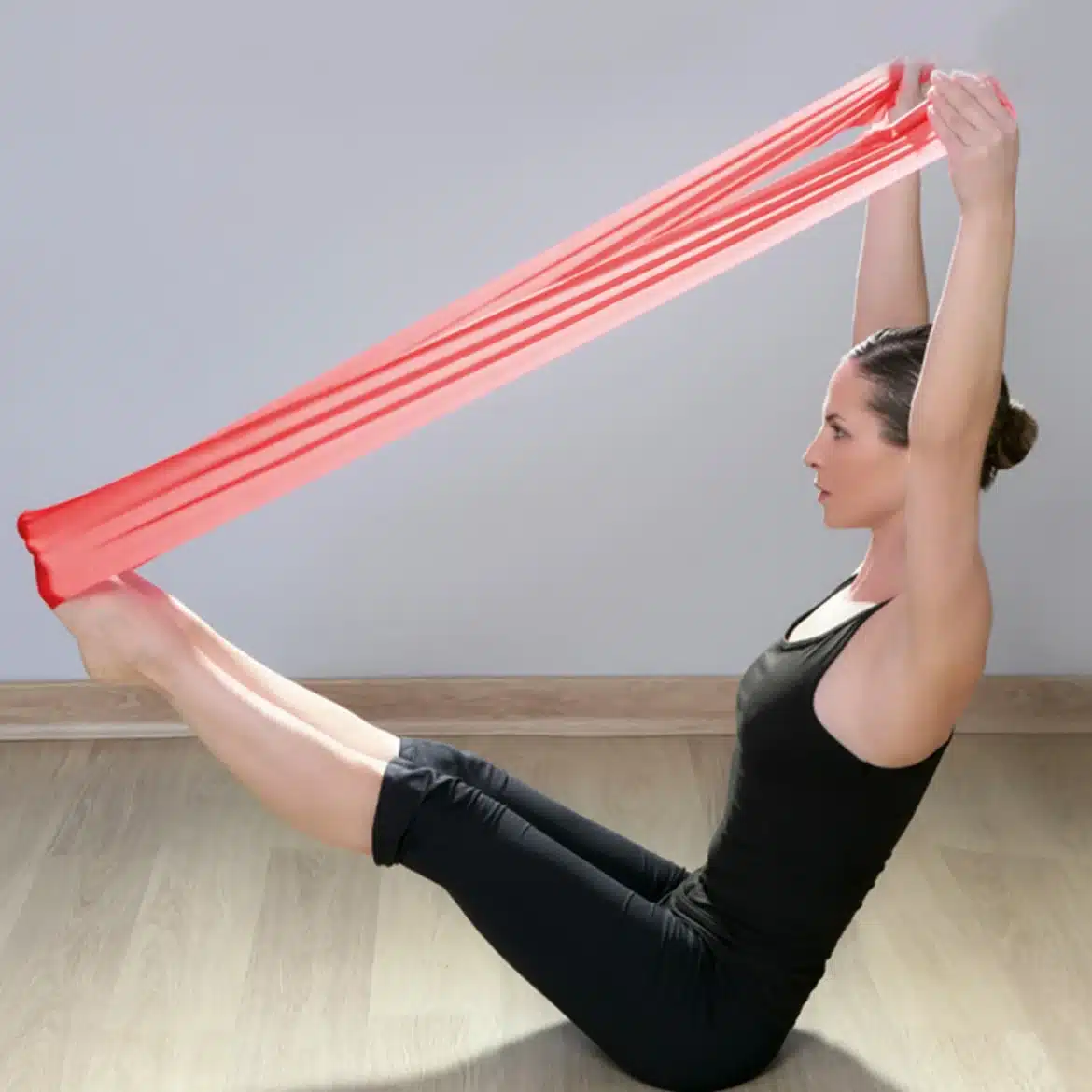Introduction
Is Pilates Resistance Training: Pilates, a versatile and dynamic exercise method, has gained immense popularity in recent years for its holistic approach to fitness and its ability to enhance strength, flexibility, and overall well-being. At its core, Pilates combines elements of both bodyweight and resistance training to create a unique and effective workout regimen. While it may not involve traditional weightlifting or heavy resistance, Pilates incorporates various forms of resistance, including the use of specialized equipment and the body’s own resistance, to challenge and tone muscles. In this exploration, we will delve into the world of Pilates resistance training, uncovering its principles, benefits, and how it can contribute to a balanced and healthy fitness routine.
Pilates, developed by Joseph Pilates in the early 20th century, focuses on building a strong core, promoting proper alignment, and improving overall body awareness. While it is often associated with mat-based exercises that rely on bodyweight for resistance, Pilates also incorporates various tools and equipment such as reformers, cadillacs, and resistance bands to intensify the workouts. Bodyweight Resistance: In its purest form, Pilates uses the body’s own resistance as a primary training tool.
Many exercises involve movements that engage specific muscle groups against gravity. This form of resistance is particularly effective for developing long, lean muscles and improving posture. Specialized Equipment: Pilates studios are often equipped with specialized machines like reformers, which utilize springs and pulleys to provide adjustable resistance. These machines offer a wide range of exercises that target different muscle groups, allowing for both strength training building and flexibility enhancement.

How is Pilates different from resistance training?
To quickly summarize, Pilates helps you develop a strong, lean, and toned body whereas weight lifting can result in a bigger bulkier body.
Principles and Philosophy
Pilates:Pilates is a mind-body exercise system developed by Joseph Pilates in the early 20th century. It focuses on core strength, flexibility, and the mind’s connection to the body. Pilates emphasizes precision, control, and fluidity of movement. It aims to improve posture, balance, and coordination through a series of exercises performed on specialized equipment like the reformer or mat.
Resistance Training:Resistance training, often referred to as strength or weight training, primarily involves lifting weights, using resistance bands, or bodyweight exercises to increase muscle mass, strength, and endurance. The primary goal of resistance training is to exert force against resistance to stimulate muscle growth and improve muscular power.
Muscle Engagement
Pilates:Pilates primarily targets the core muscles, including the abdominal, back, and pelvic floor muscles. It also engages smaller stabilizing muscles throughout the body. Pilates exercises emphasize controlled, precise movements with an emphasis on elongating the muscles rather than bulking them up.
Resistance Training:Resistance training focuses on specific muscle groups, allowing for targeted muscle development. It often involves exercises that isolate particular muscle groups, such as bicep curls for the arms or squats for the legs. The goal is to create muscle hypertrophy, resulting in increased muscle size and strength.
Is Pilates a cardio or strength training?
Pilates is great for strengthening and toning with a focus your core and for increasing your flexibility. Since it is not designed to be an aerobic activity, don’t forget your cardio! Pilates involves precise moves and specific breathing techniques. It’s not for you if you prefer a less structured program.
Pilates: The Blend of Cardio and Strength
Pilates, developed by Joseph Pilates in the early 20th century, is a unique fitness method that combines elements of both cardiovascular exercise and strength training. Its versatility allows individuals to tailor their Pilates practice to their specific goals, making it suitable for a wide range of fitness levels and objectives.
Strength Training in Pilates
Core Strength: Pilates places a strong emphasis on core strength, targeting the muscles of the abdomen, lower back, and pelvic floor. These exercises enhance stability and support good posture.
Muscle Engagement: Pilates engages various muscle groups throughout the body, including the arms, legs, and back. While it may not aim to build bulky muscles, it certainly promotes muscle tone and endurance.
Resistance: Pilates exercises often involve the use of specialized equipment like the reformer, which provides resistance through springs and straps. This resistance facilitates muscle engagement and development.
Cardiovascular Elements in Pilates
Controlled Movement: Pilates exercises emphasize controlled, precise movements that require sustained effort and control. These flowing movements, especially in Pilates mat classes, can elevate the heart rate, contributing to cardiovascular fitness.
Continuous Flow: Many Pilates routines are designed to be performed in a continuous, rhythmic flow. This approach can increase endurance and stamina over time, similar to the benefits of traditional cardio workouts.
Breath Awareness: Pilates emphasizes coordinated breathing patterns, which help oxygenate the body, increase lung capacity, and enhance overall cardiovascular function.
Is yoga and Pilates resistance training?
With different variations available at gyms and studios around the world, there’s something for almost everyone. Yoga and Pilates are both low-impact workouts that focus on using bodyweight resistance.
Yoga: The Incorporation of Resistance Training
Bodyweight Resistance: Many yoga poses involve holding and balancing the body’s weight in challenging positions. Poses like Downward-Facing Dog, Plank, and Warrior variations require engaging multiple muscle groups to maintain stability, which can help build strength and endurance over time.
Isometric Contractions: In yoga, isometric contractions occur when muscles are engaged without changing their length. For example, holding a Tree Pose requires the quadriceps, hamstrings, and core muscles to contract isometrically to maintain balance. This sustained muscle engagement contributes to strength development.
Use of Props: Some forms of yoga, such as Iyengar or Yin yoga, incorporate props like blocks, straps, and bolsters. These props can be used to increase resistance in certain poses, providing additional strength-building benefits.
What type of training is Pilates?
Pilates is a form of strength training, but it doesn’t look like some of the other strength training exercises you might be familiar with. Pilates focuses more on improving muscle tone than building muscles, but the result is similar: greater stability and endurance.
Pilates: A Mind-Body Exercise System
Core Strength and Stability: At its core (pun intended), Pilates focuses on building strength and stability in the body’s core muscles, including the abdominals, lower back, and pelvic floor. These muscles are essential for maintaining good posture, spinal alignment, and overall functional strength.
Flexibility and Range of Motion: Pilates places a strong emphasis on enhancing flexibility and joint mobility. Through a series of controlled movements, Pilates helps individuals improve their range of motion, reduce stiffness, and prevent injuries.
Muscular Endurance: While Pilates doesn’t aim to build bulky muscles like traditional strength training, it certainly promotes muscular endurance. The exercises involve controlled and precise movements that target various muscle groups, leading to increased stamina and toning.
Is Pilates like lifting weights?
There is a distinguishable difference between a Pilates vs. a weight training body. One is a low-impact workout focused on strengthening the core and improving posture, while the other is focused on building muscle mass and bone density.
Pilates: A Mind-Body Approach
Muscle Engagement: Pilates focuses on engaging multiple muscle groups simultaneously, with a strong emphasis on the core muscles, including the abdominals, lower back, and pelvic floor. While it can build muscle tone and improve strength, its primary goal is to enhance overall functional strength, not to bulk up specific muscle groups.
Equipment: Pilates can be performed on specialized equipment like the reformer, Cadillac, and Wunda chair, which provide adjustable resistance through springs and straps. However, these devices are designed to facilitate controlled movements and improve alignment rather than heavy lifting.
Controlled Movements: In Pilates, exercises are characterized by controlled and precise movements, often performed with slow, deliberate motions. The emphasis is on proper form, alignment, and fluidity, rather than lifting heavy weights or performing high-repetition sets.
Is Pilates as good as lifting weights?
If you simply want to keep your body moving and feeling healthy, either is good. If your definition of fit involves lifting heavy weights and muscle hypertrophy, weight training will be better for reaching these goals. If mobility and improved functionality and core strength is a bigger aim, Pilates is better.
Advantages of Pilates
Core Strength and Stability: Pilates excels at building core strength, targeting muscles like the abdominals, lower back, and pelvic floor. A strong core is crucial for overall stability and good posture.
Flexibility and Range of Motion: Pilates focuses on enhancing flexibility and joint mobility, which can lead to improved body awareness and reduced risk of injury.
Mind-Body Connection: Pilates encourages mindfulness, deep breathing, and relaxation, helping reduce stress and increase mental clarity.
Low Impact: Pilates is generally low-impact, making it suitable for individuals with joint issues or those recovering from injuries.
Balance and Posture: Pilates exercises often challenge balance and alignment, promoting better posture and reducing the risk of musculoskeletal problems.
Limitations of Pilates
Muscle Building: While Pilates can improve muscle tone and functional strength, it may not be as effective as weight lifting for those seeking significant muscle hypertrophy (muscle size increase).
Cardiovascular Conditioning: Pilates provides some cardiovascular benefits, but it may not offer the same intensity or cardiovascular conditioning as weight lifting combined with aerobic exercises.
Specific Muscle Isolation: Pilates typically engages multiple muscle groups simultaneously, making it less suitable for those looking to isolate and target specific muscles for bodybuilding purposes.
Is Pilates alone enough exercise?
Traditional Pilates can be a great point of entry to exercise for those without a history of exercise. Someone who does not have a regular exercise routine already established will most likely note both strength and some hypertrophic improvements from many forms of exercise, Pilates included.
Strengths of Pilates as a Standalone Exercise
Core Strength and Stability: Pilates is exceptional at developing core strength, targeting muscles in the abdomen, lower back, and pelvic floor. A strong core is fundamental for overall stability and functional strength.
Flexibility and Range of Motion: Pilates places a significant emphasis on enhancing flexibility and joint mobility. It can lead to improved body awareness, reduced muscle tension, and a decreased risk of injury.
Mind-Body Connection: Pilates encourages mindfulness, deep breathing, and relaxation, helping to reduce stress and increase mental clarity. It provides a holistic approach to fitness that benefits both the body and the mind.
Limitations of Pilates as a Standalone Exercise
Muscle Building: Pilates can improve muscle tone and functional strength, but it may not be as effective as weight lifting or resistance training for those seeking significant muscle hypertrophy (muscle size increase).
Cardiovascular Conditioning: While Pilates provides some cardiovascular benefits, it may not offer the same intensity or cardiovascular conditioning as aerobic exercises such as running, swimming, or cycling.
Specific Muscle Isolation: Pilates typically engages multiple muscle groups simultaneously, making it less suitable for those looking to isolate and target specific muscles for bodybuilding or sport-specific training.
Can I gain muscle with Pilates?
Yes. Pilates absolutely builds muscle. It is, after all, an exercise system. However, everything about Pilates feels and looks a little different from other strength training or exercise systems.
Factors Influencing Muscle Gain in Pilates
Frequency and Consistency: To build muscle with Pilates, consistency is essential. Regular practice, ideally multiple times a week, is necessary to see meaningful progress.
Nutrition: Proper nutrition is critical for muscle development. Consuming an adequate amount of protein and overall calories to support muscle growth is essential, regardless of the exercise method.
Intensity and Variation: Intensity matters in muscle development. To maximize muscle gain, it’s important to challenge yourself by gradually increasing resistance, adding variety to your Pilates routine, and progressively overloading your muscles.
Rest and Recovery: Muscles grow during periods of rest and recovery. Adequate sleep and recovery time between Pilates sessions are crucial for muscle repair and growth.
Genetics and Individual Factors: It’s important to recognize that genetic factors play a role in how easily one can gain muscle. Some individuals may experience faster muscle growth than others, regardless of the exercise method.

Conclusion
In the world of fitness, Pilates resistance training stands as a unique and highly effective approach to achieving strength, flexibility, and overall well-being. This method, rooted in the principles of controlled movement and mindful engagement, combines various forms of resistance to create a comprehensive workout regimen that caters to individuals of all fitness levels. Whether through bodyweight resistance, specialized equipment, or the use of resistance bands, Pilates offers a versatile path to achieving your fitness goals.
The benefits of Pilates resistance training extend far beyond physical strength. By fostering a strong mind-body connection, improving posture, and enhancing flexibility, it contributes to a holistic sense of wellness. Moreover, its low-impact nature makes it accessible to a wide range of individuals, including those recovering from injuries or seeking a gentler form of exercise.
As we conclude this exploration, it becomes evident that Pilates resistance training represents more than just a workout routine; it embodies a philosophy of balance, control, and self-awareness. Whether you’re striving to build a stronger core, recover from an injury, or simply elevate your overall fitness, Pilates resistance training offers a path to a healthier, more balanced life. It stands as a testament to the power of mindful movement and the enduring appeal of this fitness method in the ever-evolving landscape of wellness.

